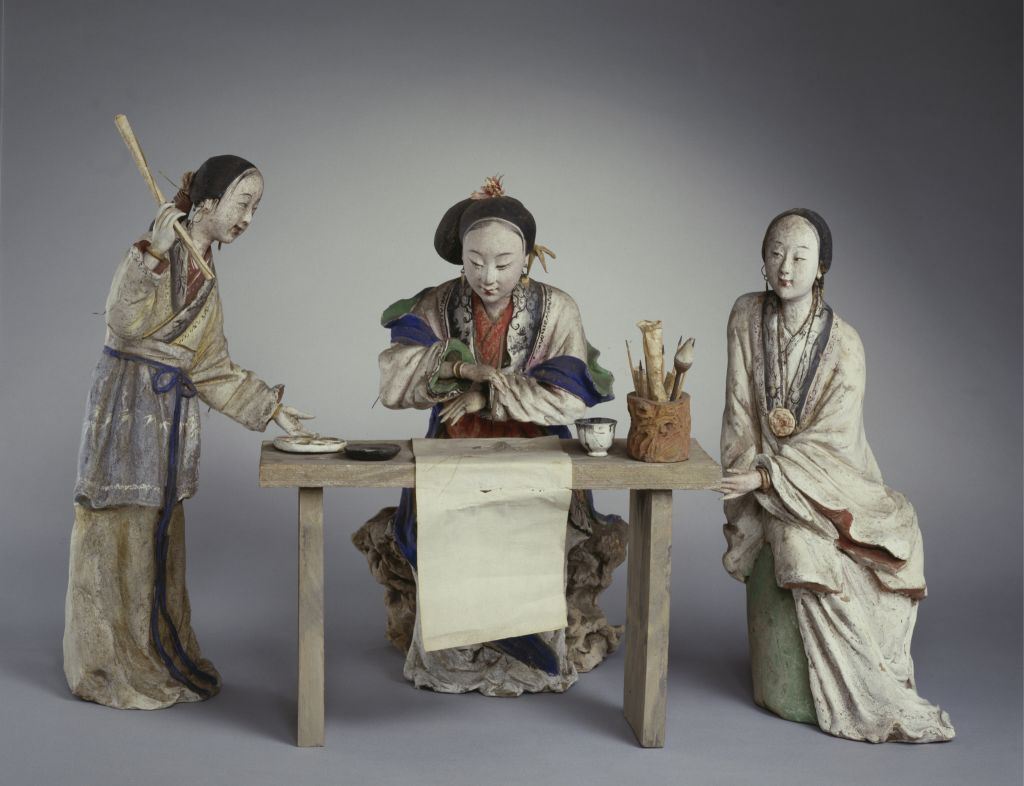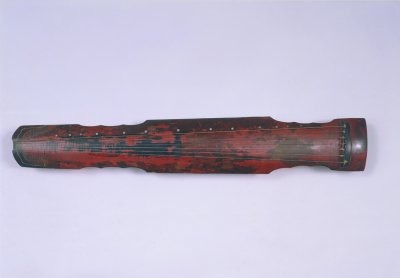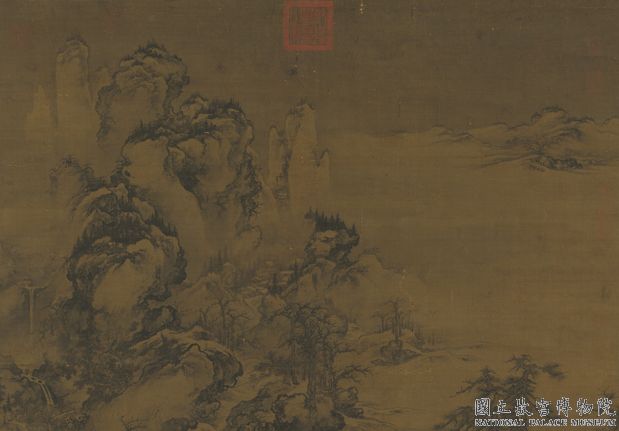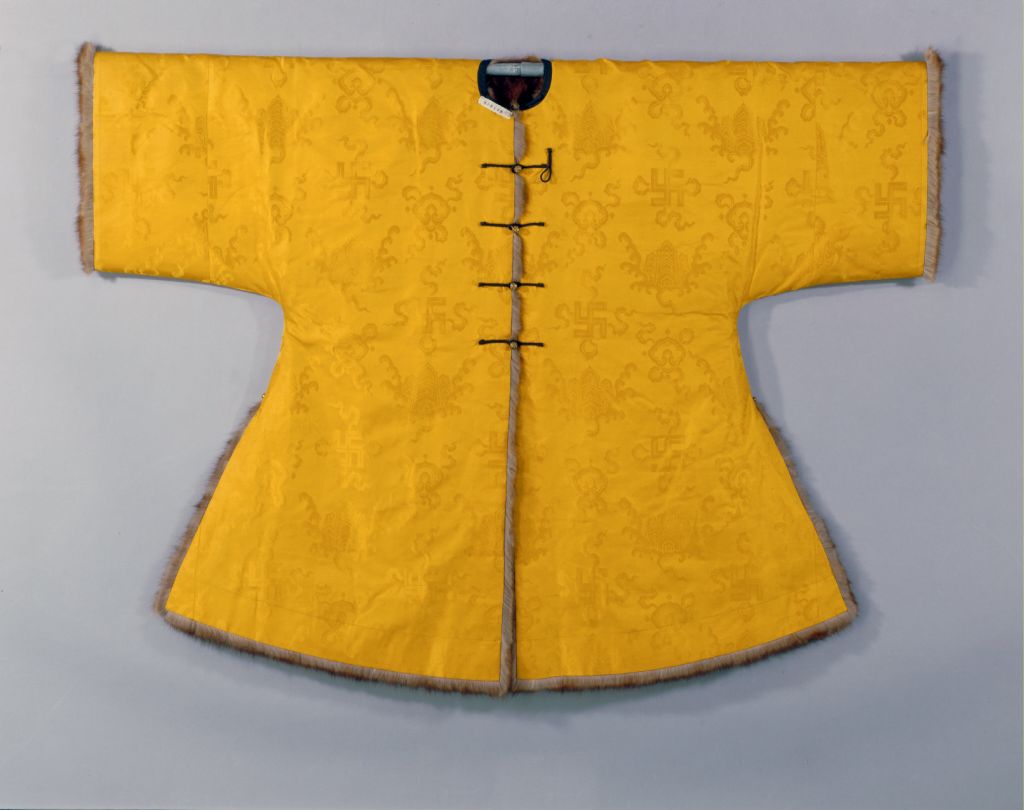[Jiebo Map Volume]
Jiebo Map Volume, Yuan, silk, colored, 31.8 cm vertically and 97.6 cm horizontally
No author’s stamp. Introduce the title of Ni Can’s running script of the Qing Dynasty: “The authentic Jiebo map. There are many copies of Jiebo map in the world, but there are many copies. However, this volume is ancient and exquisite, and it is undoubtedly a good book, which is really a treasure. Ni Can’s inscription on the wild goose garden in the autumn and July of Guihai in Kangxi.” Guihai is the 22nd year of Kangxi (1683). Ni Canshu in the back “Treasure Collection Sutra: The mother of the devil is the wife of the king of ghosts and gods, Prajnaga, who has ten thousand sons, all of whom have the power of Hercules, and his youngest son Binjaro. The mother of the devil is cruel and evil, and kills his son to eat himself. The people suffer from it, and they report it to the Buddha. At that time, they take his son Binjaro to hold the bowl bottom. The mother of the devil is known all over the world, and seven days, they cannot beg, and worry about their troubles. It is said by others that the Buddha has all wisdom. That is to say to the Buddha, ask where the son is. When the Buddha replies: You have There is only one child lost. Worry and sorrow push for it. People in the world may have one or three or five sons, and you kill them. Bai Buddha, the mother of the devil, said: If I see Binjaro, I will never kill the sons of the world. Even if the mother of the devil saw Binjaro under the bowl. You can’t get it if you do your best. Buddhist saying: You should return your son after receiving three conversions and five precepts. The mother of the devil, such as the three conversions and the five precepts. Upon receipt, the child shall be returned. Buddha said that you are good at keeping precepts. You are the ninth daughter of the Capricorn King in the time of the Kasyapa Buddha. Moling Ni Canshu. ” In the Qing Dynasty, Liu Shuxun wrote, “At the age of seven years old in Tongzhi, Liu Shuxun looked at Bingzhou in May of the fifth birthday.” The seal of Ni Can, “the seal of Yan Yuan,” the seal of Ni Can, “the official of Tsinghua University’s attendants,” and Liu Shuxun, “the seal of Shu Xun,” and other seals were collected, totaling 14 sides
This picture is a Buddhist story painting. It depicts the scene of the Buddha Buddha holding his young son Bingaro under the bowl in order to punish the mother of the devil, and the mother of the devil sent many young ghosts to expose the bowl to save the son. In the picture, the Buddha Buddha is sitting on the lotus seat with a posture of safety, and the gods of heaven are holding weapons to protect his right and left side, and are disdaining the scene of the audience’s useless unveiling of the bowl. The children cried in the bowl and opened their hands for help. The little ghosts spared no effort to save them. The mother of the devil was surrounded by the children with a sad face. She was obviously exhausted to save the young child
The author accurately shows their different positions and the relationship between each other through the personalized description of the characters and feelings of different characters in sharp conflict, so that the picture with large scenes and numerous characters has the cohesive force of form and spirit. The picture shows the most vivid depiction of ghosts. With rich imagination, the author humorously shows the little ghosts with exaggerated and varied shapes. Through their busy actions such as rope pulling, wooden prying, etc., they give the picture a strong sense of movement and paint a tense and intense atmosphere, thus accurately expressing the creative theme of Jiebo. The different images in the picture are drawn with different ink lines, and the warriors and ghosts are drawn with rough ink lines, showing their strength and brave spirit by depicting their solid flesh and bones. Buddha, ladies and children are outlined with soft threads, and their delicate and graceful looks are set off by the soft texture of the cloth. The whole picture is filled with lines and colors. The color is thick and rich. It has the style of early murals. It gives people a lively and lively visual feeling, making the picture not too heavy
The internal government of the Qing Dynasty compiled the description of “Secret Palace Pearl Forest”.
![图片[1]-Jiebo scroll-China Archive](https://chinaarchive.net/Yuan dynasty/painting/s58de1072f3ab6.jpg)
![[Qing Dynasty] British female painter—Elizabeth Keith, using woodblock prints to record China from the late Qing Dynasty to the early Republic of China—1915-China Archive](https://chinaarchive.net/wp-content/uploads/2022/11/image-191x300.png)




